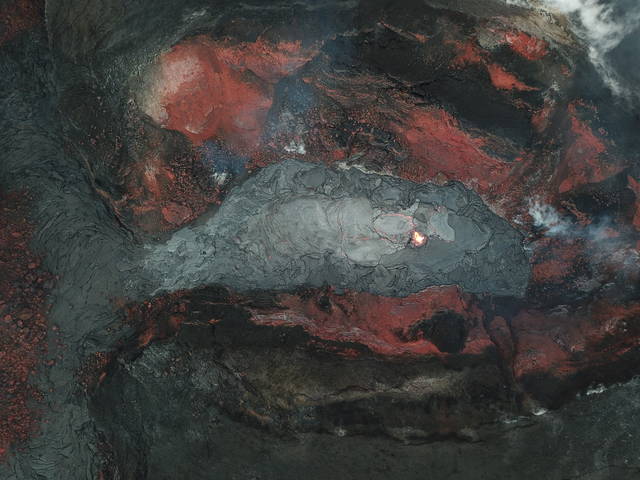With Kilauea’s volcanic activity at the summit and in lower Puna evidently on pause, volcanic gas emissions from the volcano have reached their lowest levels in more than a decade.
Between Kilauea summit, the lower East Rift Zone and Pu‘u ‘O‘o, sulfur dioxide emission rates have dropped to less than 1,000 tons per day, the lowest since 2007.
Hawaiian Volcano Observatory research geologist Patricia Nadeau said the drop in emissions correlates directly with the decreasing lava levels at Pu‘u ‘O‘o, Halema‘uma‘u and the lower East Rift Zone. Very little lava has been seen in Fissure 8 in lower Puna for weeks, and sulfur dioxide emissions in the lower East Rift Zone have dropped to less than 20 tons per day.
The reduced emissions have been noticed in places like Pahala, which has been wreathed in volcanic haze since the lava lake appeared at Halema‘uma‘u crater in 2008.
Louis Daniele, manager of the Ka‘u Coffee Mill, said the air around Pahala and Ocean View is clearer than it has been for years.
“There’s such a marked difference,” Daniele said. “There are blue skies again, you can see the horizon line, it doesn’t smell like rotten eggs all the time, people’s eyes aren’t burning, people’s throats aren’t burning.”
Daniele said the improved air quality seems to have improved the morale of both residents and visitors, explaining that far fewer customers have asked about the health risks of staying in Pahala, which was a common question during the eruption earlier this year.
In fact, Daniele said, visitors to Pahala have increased. At the eruption’s worst, Daniele said the Coffee Mill was making as little as $600 per day. Over Labor Day weekend, however, Daniele said the mill made well over $2,000 per day.
“I’m not checking air-quality warnings all the time now,” Daniele said. “Before, I was checking up on the air quality every hour, seeing if it was safe.”
Daniele said the heavy rains of the last weeks also have settled the ash on Kilauea’s slopes, which would periodically blow over the south of the island in “ash storms” long after the volcano stopped producing new ash.
“We’ve survived, and we’re hoping to get back to business as usual,” Daniele said.
However, Nadeau said future activity at the volcano is impossible to project. Gas emissions can return gradually over months or even years — or change at any time.
Email Michael Brestovansky at mbrestovansky@hawaiitribune-herald.com






